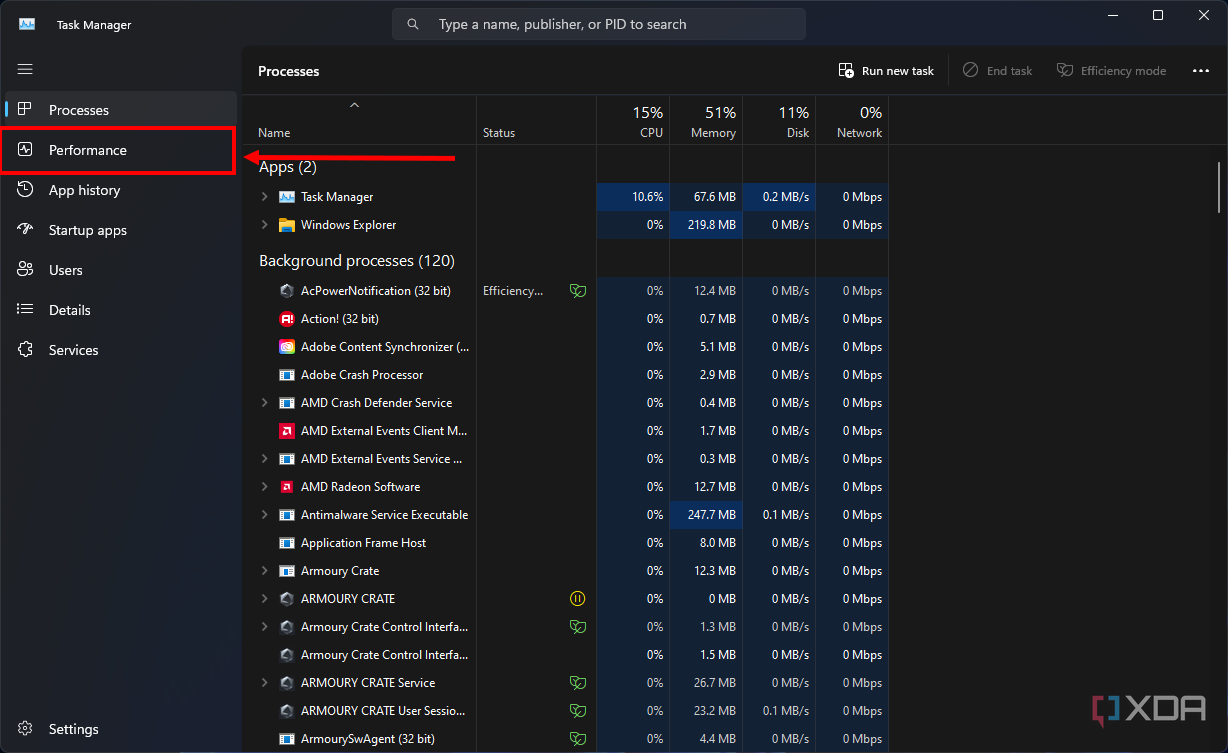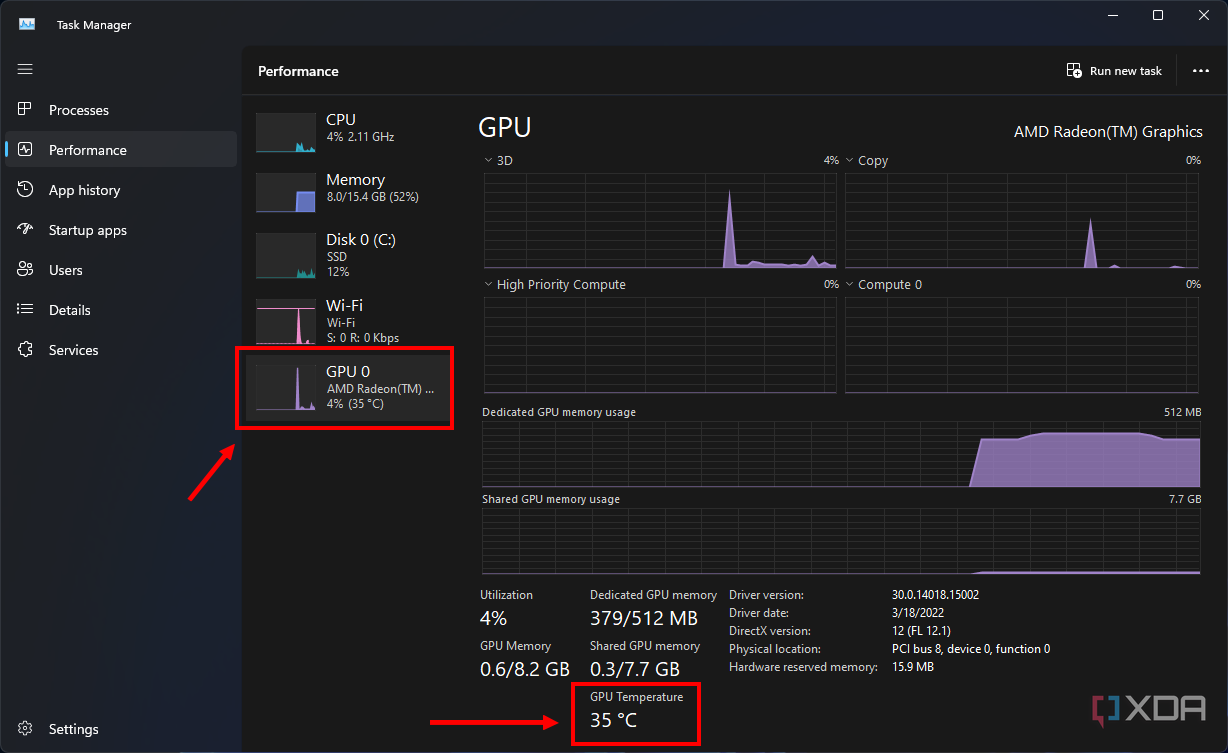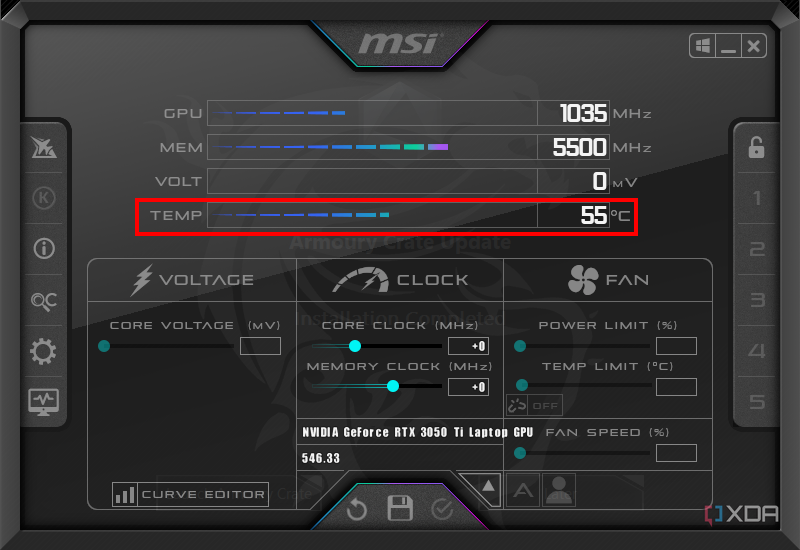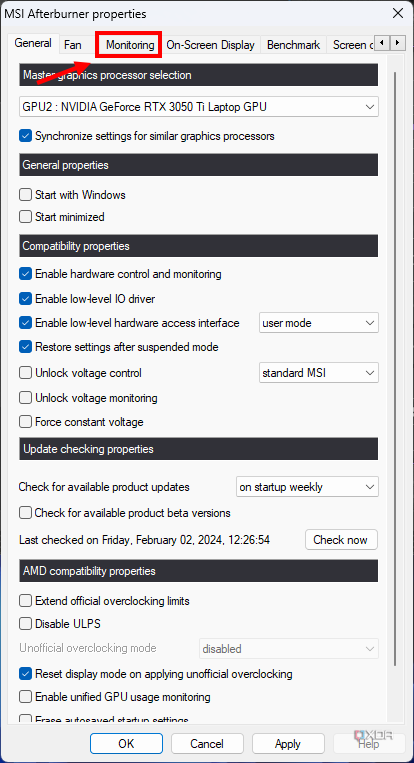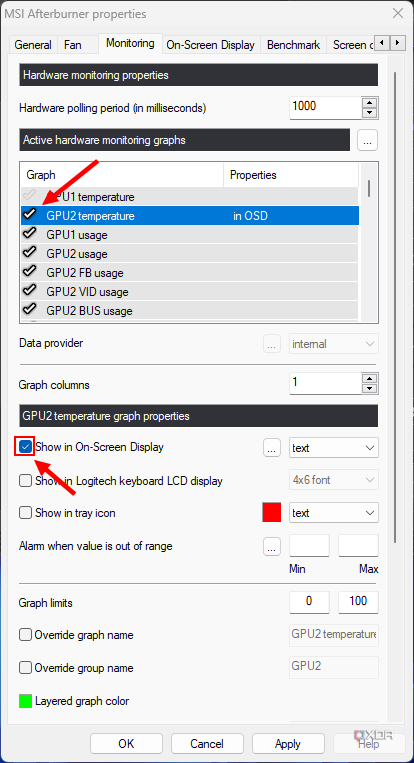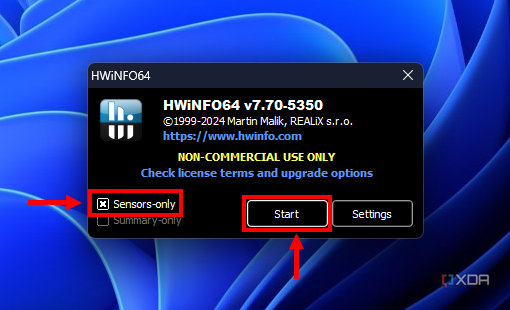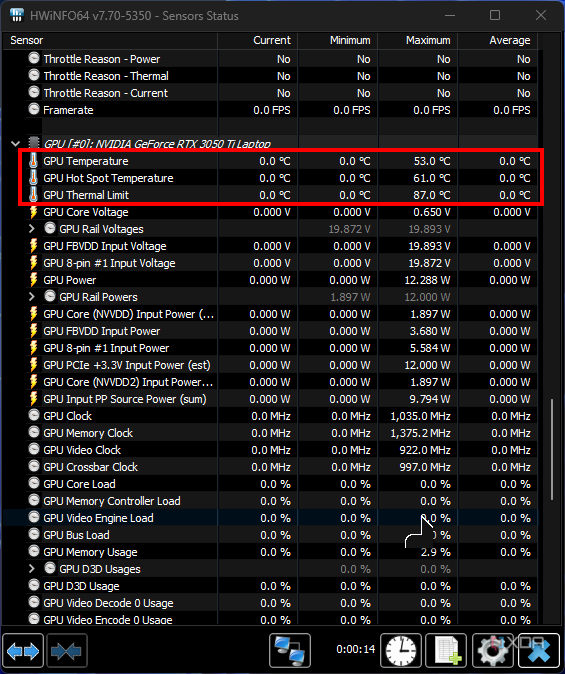Knowing the temperature of your PC components can be very important in diagnosing certain problems with your laptop or PC, whether it's just performance or some kind of crash that might be happening. When components overheat, they tend to throttle, which can cause issues in games and other programs. Even worse, high temperatures can damage your components over time. If you want to keep an eye on the temperature of your GPU in Windows 11, there are a few ways to do that.
Check the GPU temperature in Task Manager
The easiest way to find out the temperature of your GPU is to use Task Manager. It's worth noting that this will most likely only work if your PC has a discrete GPU, so if you're using a computer with integrated graphics, you might not be able to see it. But if you do have a dedicated graphics card, here's how to check its temperature on Windows 11:
- Right-click the Start menu icon and choose Task Manager to open it. In the most recent versions of Windows 11, you can also right-click an empty area of the taskbar to find it.
-
In the menu on the left side, switch to the Performance tab.
- You'll see a few components, and your GPU should be at the end. If you have more than one GPU, you'll need to find the right one by its name.
-
The temperature is displayed near the bottom of the Task Manager window. You can also see it in the list of components on the left.
This is a very easy method to check the current temperature of your graphics card, and you can launch Task Manager at any time to check it. Do note that temperatures will be displayed in Celsius, so you'll need to convert if you want to know them in Fahrenheit.
Check your GPU temperature with monitoring apps
There are other methods you can use to check and monitor the temperature of your GPU, though. A popular app is MSI Afterburner, which not only gives you the GPU temperature but a lot of other performance metrics related to gaming. You can also use HWiNFO or HWMonitor.
MSI Afterburner
MSI Afterburner is a great tool for checking your GPU temperature, since it goes further and lets you overlay your GPU temperature (and other performance metrics) over a game, so you can easily see how hot your GPU is getting while gaming. The app itself displays your temperatures right on the home page, so all you need to do is download and install Afterburner (making sure to also include RivaTuner Statistics Server) and then run it.
To see the GPU temperature during a game, you'll have to head into the settings and make a few changes. Here's what you need to do:
- Open MSI Afterburner
- Click the settings (cog) icon on the sidebar.
-
Choose the Monitoring tab at the top.
- Look for a field called GPU temperature. In some laptops and PCs, you may have options for GPU1 Temperature and GPU2 Temperature. Usually, the latter is for your discrete GPU.
-
Make sure the field is enabled (with a highlighted checkmark), and then check the box that says Show in On-Screen Display.
- Click Apply and then Close (don't close the main MSI Afterburner window).
-
Run your game, and you'll see the GPU temperature shown in the top left corner of your screen in real time.
HWiNFO
HWiNFO is another very popular tool for system monitoring, which naturally includes GPU temperatures. You can download HWiNFO here and follow these steps to check your GPU temperatures:
- Run HWiNFO.
-
In the launch window, check the box that says Sensors only and click Start.
-
Scroll down to find the GPU section and the first few rows should be focused on the temperatures.
Wrapping up
That's about all you need to know to check your GPU temperatures on Windows 11. It's a fairly straightforward process, and you shouldn't need any third-party software, though there are a few options if you want to go that route. If you find that your GPU temperatures are too high, we have a guide to help you lower your GPU temperatures.


